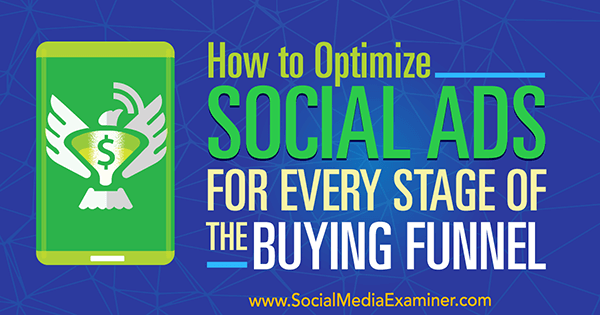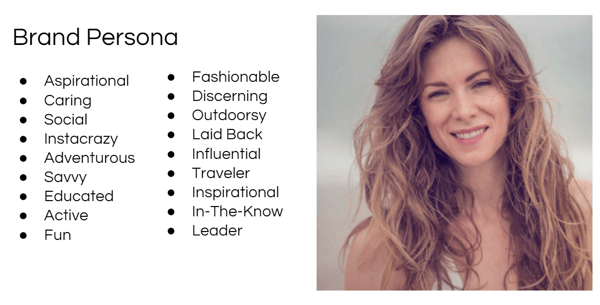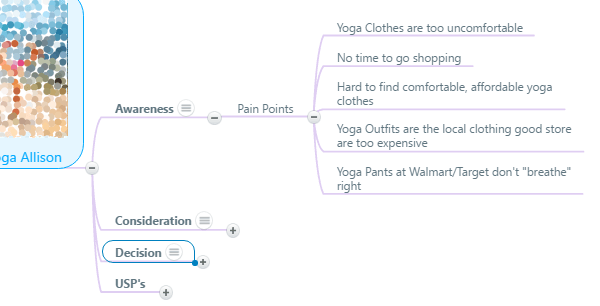As part of this process, you’ll identify your buyer personas, map them to buying stages, and develop a list of unique selling propositions (USPs) to target when running your first series of ad tests. Map each buyer persona to each stage of the buying funnel. Take each buyer persona through the process of testing images, copy, and placement. You should be running multiple campaigns and constantly feeding Facebook with new content. #4: Test Different Target Audiences As part of your buyer persona research, you’ve identified multiple interests of this persona, which helped you craft your starter ads. For each ad, the ad copy, images, and placements will be the same; the only difference is the interest groups targeted for each campaign. Knowing how to search for and identify target audiences is an art, and one that you should know well to perfect this ad testing process. To do this, use the same methodology as for your starter ads, testing these variables: Ad copy specifically addressing the pain points and needs of your target audience. Create TACT (target audience creative testing) ads. At this point, you can continue to run the TACT campaign, but turn off all ads or ad sets that aren’t performing.
Want more conversions from your social media ads?
Wondering how to successfully target buyers at every stage of the sales process?
Mapping your buyer personas and testing your creatives let you deliver ads that speak to a buyer’s immediate needs and concerns, resulting in higher conversions.
In this article, you’ll discover how to serve optimized social media ads that generate sales from all of your customers.

#1: Create Buyer Personas
Before you create a single ad, you need to spend significant time at the research stage. As part of this process, you’ll identify your buyer personas, map them to buying stages, and develop a list of unique selling propositions (USPs) to target when running your first series of ad tests.
Start by conceptualizing your personas. Take into account not only demographics, but psychographics as well. Your persona should include (at a minimum) age, gender, location, education, job/career path, relationship status, children/pets, household image, personal goals, and specific preferences related to your brand.
Create a Brand Persona
The first persona to create is your brand persona, which embodies the voice and vision of your messaging. This persona represents the largest share of your target audience and embodies many of your brand’s attributes and values; it’s the default voice of your brand.
First, brainstorm the characteristics of your brand persona.

Next, include demographic and psychographic data.

Finally, create a narrative around your buyer persona.

When you’re finished with your brand persona, you’ll have a visual of whom you’re “talking to” when you craft ads and design visual and textual creatives.
Create Additional Buyer Personas
After you create your foundational persona (your brand persona), you can move on to create new buyer personas. There are tools you can use to help with this process, such as Personapp, Xtensio, Up Close & Persona, or HubSpot’s free persona creator tool, MakeMyPersona.
To use HubSpot’s tool, go to MakeMyPersona.com and click Start Making My Persona. Then proceed through the questionnaire, providing as much detail as possible.

Once you finish and submit the form, you’ll receive an email with your fully realized persona.
Repeat this process for each of your potential buyer personas.
#2: Map Buyer Personas to the Buying Funnel
Now that you know whom you’re talking to, you need to delve even deeper into each buyer persona’s needs at every stage of the buying funnel: Awareness, Consideration, and Decision.
- At the awareness stage, the persona has pain points but does not know or understand the solution to the problem.
- Once the persona reaches the consideration stage, the persona is actively researching options to fix his or her pain points.
- At the decision stage, he or she simply has to select a product to purchase and a company to purchase it from.
Use a mind map as a simple, step-by-step solution for mapping buyer personas to buying stages. Start by listing your buyer personas. Include the names of your personas and images of each one.

Now brainstorm pain points for each persona, starting with the awareness stage. Consider what problems your persona faces at this stage.

Next, identify what research goes into the consideration stage. Where does your persona search for answers? What keywords does she use to search? Also identify what questions she’s asking to solve different pain points.

For the decision stage, think about what your persona considers before making a purchase. What issues are of most interest to her? Some of the primary ones include pricing, delivery time frames, return policy, shopping cart usability, mobile compatibility, reviews, and available coupons.

Then, consider what unique selling propositions will appeal to this persona. Based on your research, what are the most powerful USPs that will move this persona to action when seeing targeted ads?

Follow this same process to map each of your buyer personas to every stage of the buying funnel.

Finally, create a brand persona and value proposition grid. In this value proposition,…
COMMENTS